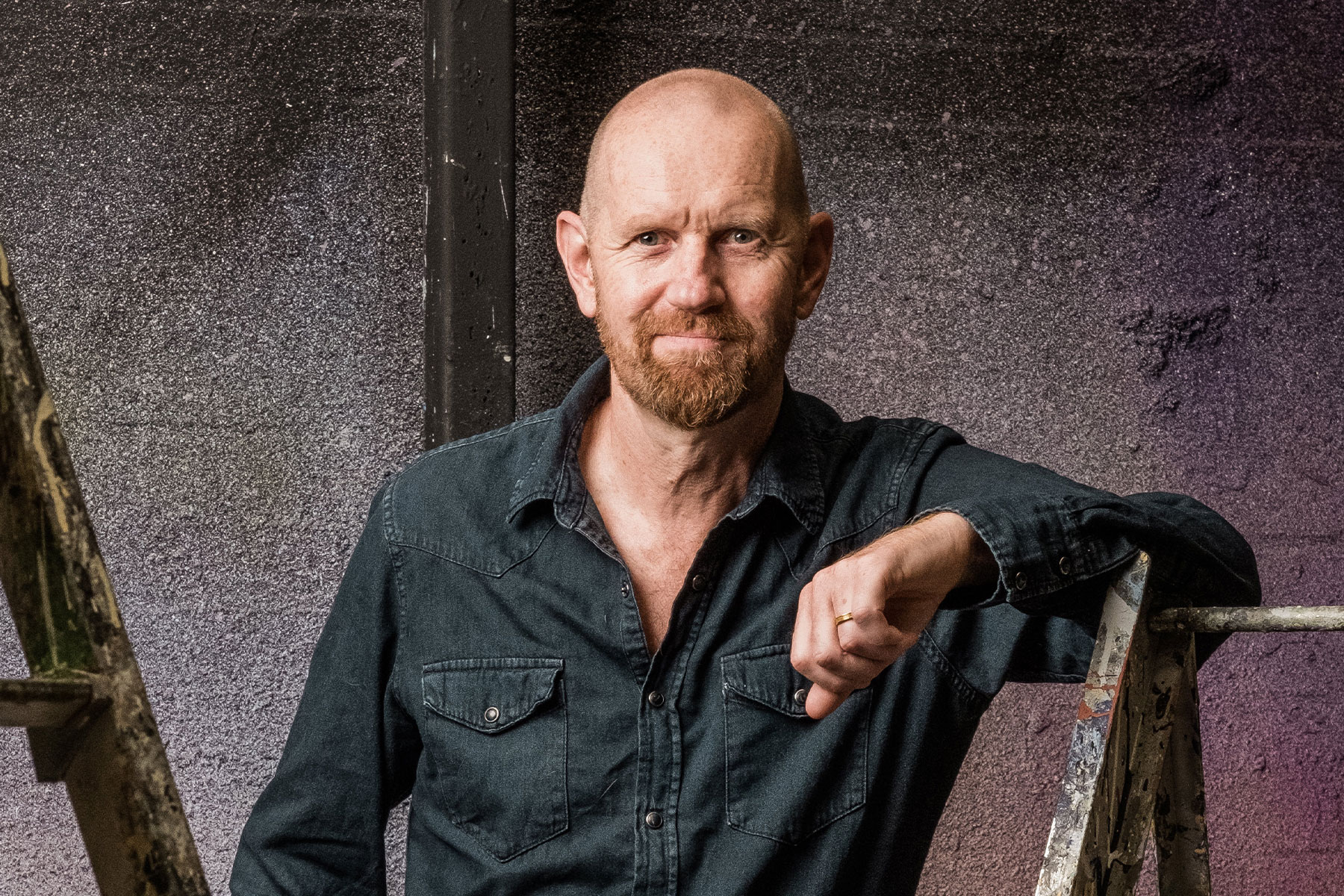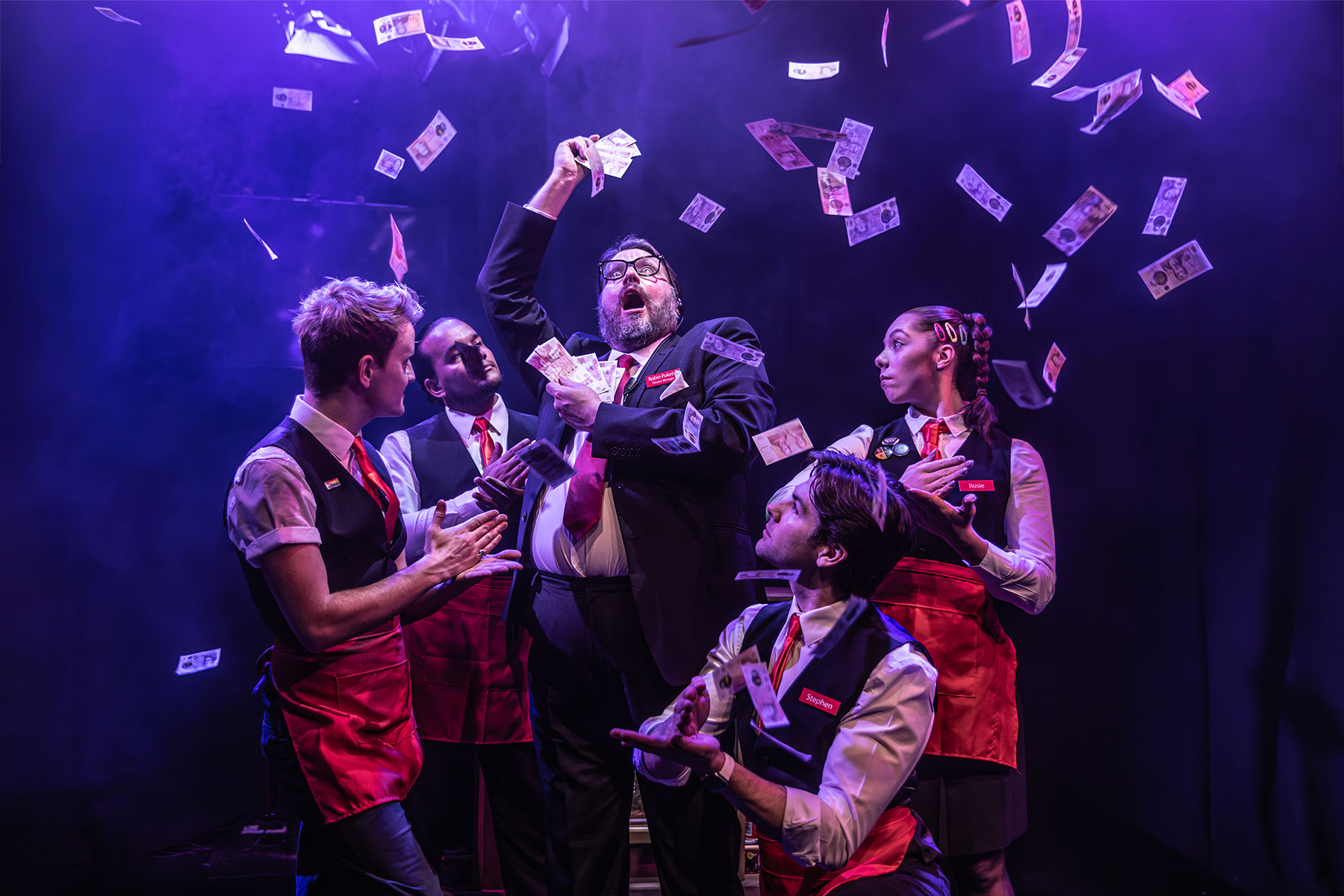Cat on a Hot Tin Roof at Royal Exchange Theatre – review

“You talk in circles” is the complaint made by the disaffected Brick in Tennessee Williams’ 1955 play. It becomes a quite literal circular enclosure in the Royal Exchange’s in-the-round space – the family scrutiny, earwigging and expectation physically fencing in Brick and Maggie, whose marriage has wilted when they need it to secure them his inheritance.
The bedroom clutter and messy bedsheets signal a relationship in disarray before the play begins. The central bed – circled by the characters, resisted by the couple – is partly wrapped around by a gold chain curtain, their fruitless marriage a gilded cage. The huge decorative mobile suspended over their bed is as much about sedating Brick’s disquiet as it is taunting his childlessness.
Bayo Gbadamosi keys into his powerlessness, almost paralysed on the bed, his leg injury rendering him physically less able to get away from everyone’s probing. But the play depicts his gradual withdrawal, whereas Gbadamosi’s disdain is obvious from the start. His surly expression makes him seem rankled by everyone’s constant chatter, rather than elusively preoccupied with illicit feelings around the loss of Skipper. When he asks Maggie to repeat herself, it’s more that he’s just tuned out her grating voice than that his mind’s elsewhere.
Not only is there little sense of him being haunted, but he also doesn’t spiral into drunkenness. This is a man squarely pursuing oblivion – an alcoholic who uses liquor bottles as crutches dotted around his bedroom. But there’s none of the tension in his heightening volatility which you should fear snapping. Nor is he a painfully desperate figure, but rolls his eyes, thumps furniture petulantly and has an adolescent whine like a difficult teen.
Without him to refract through or reflect off, it’s hard for Maggie not to become insufferably self-absorbed. But Ntombizodwa Ndlovu shows, magnetically, how she performs a double seduction. Her slinky allure is to beguile the family as well as entice her husband. She rises to the same hysterical pitch as the shrill May, while switching wigs and dresses in a way that subtly suggests the kind of manipulative qualities or mendacity that Brick resents. She throws him sultry looks over her shoulder and moves with a restlessness as though trying to animate and activate him with the same energy.
But Roy Alexander Weise’s production understands that other toxins run in the family bloodstream alongside Brick’s alcoholism. It shows how he inherits emotional unease, the parents’ relationship clearly mirroring his and Maggie’s dysfunction. He sees Patrick Robinson’s gruff, raspy-voiced Big Daddy punishing his pandering wife, and both halves end with them lamenting “Wouldn’t it be funny if that were true?” However, the family’s grotesqueness is overdone – from a belching Big Momma, to Mae and Gooper’s children being played by the parents – so the sniping cruelty becomes overly comical and defanged. Insults towards Big Momma only evoke laughter rather than wincing, and Maggie follows her retorts to May by proudly lifting her chin at the audience like she’s in a knowing sitcom.
She also sings refrains from Rihanna’s “Bitch Better Have My Money”, which are both jarring and misattribute the primary avarice to Maggie rather than Mae, while suggesting her investment in their relationship is financial. This, and other musical interludes, only add to the play’s many interruptions to the characters’ conversations. The overlong production’s three hours and fifteen minutes ultimately feel as stifling as the Mississippi heat, and need building with a stronger Brick.










